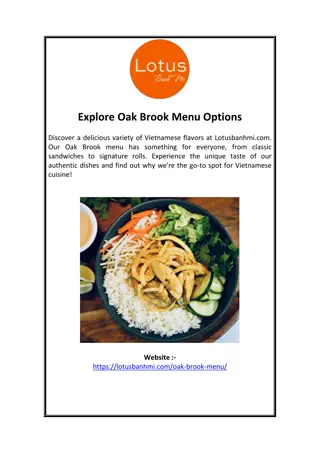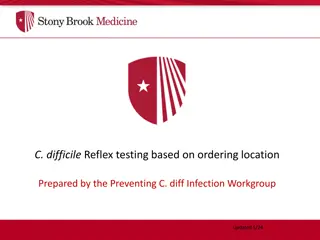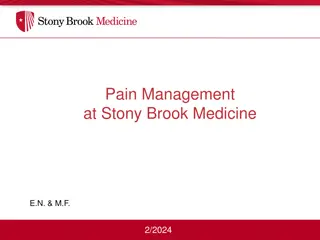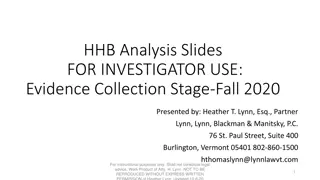Stony Brook University Data Strategy Overview
In this presentation, Stony Brook University's data strategy is elucidated, emphasizing the importance and benefits of having a structured plan for data utilization. The strategic approach includes harnessing and integrating data, disseminating information, advancing the university's mission, and supporting objectives to promote operational effectiveness, revenue growth, risk reduction, innovation, and more. The data assets utilized and the elements of the university's data strategy are also highlighted, showcasing the focus on data acquisition, governance, quality, access, usage, literacy, extraction, reporting, and analytics.
Download Presentation

Please find below an Image/Link to download the presentation.
The content on the website is provided AS IS for your information and personal use only. It may not be sold, licensed, or shared on other websites without obtaining consent from the author.If you encounter any issues during the download, it is possible that the publisher has removed the file from their server.
You are allowed to download the files provided on this website for personal or commercial use, subject to the condition that they are used lawfully. All files are the property of their respective owners.
The content on the website is provided AS IS for your information and personal use only. It may not be sold, licensed, or shared on other websites without obtaining consent from the author.
E N D
Presentation Transcript
Stony Brook University Data Strategy Presented to the Data Governance Council June 8, 2017
What is a data strategy? Intentional action & prioritization plan to: Harness and integrate data Create and disseminate information/intelligence Advance University mission 2
Why do we need a data strategy? Support objectives to: Promote operational effectiveness, excellence & efficiency Retain and grow revenue Reduce risk Drive innovation Proliferation of data assets Increasing organizational size and complexity Advances in analytical tools 3
Selected Stony Brook data assets Assessment Data Help Desk Tickets Card Swipes Surveys 4
Stony Brooks mission The university has a five-part mission to provide and carry-out: Highest quality comprehensive education Highest quality research and intellectual endeavors Leadership for economic growth, technology, and culture State-of-the-art innovative health care, with service to region and traditionally underserved populations Diversity and positioning Stony Brook in global community 5
Elements of Stony Brooks data strategy Data acquisition Data governance Data quality Data access Data usage & literacy Data extraction & reporting Data analytics 6
Data acquisition Data acquisition involves identification, prioritization, capture, storage, linkage, and curation of data assets most valuable to the enterprise 7
Data acquisition Identification & prioritization Establish and maintain an inventory of data assets and assess acquisition maturity Establish a process to prioritize integration into data infrastructure 8
Data Acquisition Capture & storage For each data asset identify current and optimal capture procedures For each data asset identify current and optimal storage areas 9
Data Acquisition Linkage & curation For each data asset identify current and optimal procedures to link to other data sources For each data asset identify how data will be updated and maintained to preserve value 10
Data governance Data governance formalizes behavior around how data are defined, produced, used, stored, and destroyed to enable and enhance organizational effectiveness. PeopleSoft and the Data Warehouse are governed by the University Data Governance Council Establish expectations for all other data assets to have formal data governance 11
Data governance Requirements Stony Brook Data Governance Framework* Designated decision-making body SteerCo Data Governance Council Formal data dictionaries and descriptions of architecture Human Resources Finance Student Individuals designated to provide stewardship Data Stewards Data Stewards Data Stewards May opt to be governed through the Stony Brook Data Governance Council *Applies to PeopleSoft and the Data Warehouse (as of 9/26/16) 12
Data Quality Data quality is the state of completeness, validity, consistency, timeliness and accuracy that makes data appropriate for a specific use. The Data Governance Council is charged with improving data quality for PeopleSoft and the Data Warehouse. A roadmap to achieve this has been developed For each data asset, develop and execute a plan to maintain and improve data quality; automate when justified by ROI. 13
Data access Data access ensures authorized individuals can obtain and use data when and where they are needed and protects privacy and sensitive information by preventing unauthorized use. Accessibility | Authorization | Security 14
Data usage and literacy Data usage and literacy entail people regularly obtaining data; understanding them; and using them to improve operational effectiveness . Data User Responsibilities Establish for all data assets: 1. Recognize data complexities; understand data meanings and limitations Usage metrics Effectiveness metrics Training inventory 2. Cite sources; assume broad audiences 3. Respect privacy 4. Secure data and reports 5. Report data quality issues 15
Data extraction and reporting Data extraction and reporting represent the ways that data are queried and retrieved from storage and then delivered to users through regularized and ad hoc reporting to support day-to-day operations. Extraction | Reporting 16
Data extraction and reporting Methods for querying and extracting data from storage should be identified, including user types associated with each extraction method Extraction Reports should be linked to operational objectives Report inventories should be maintained in an accessible area. Reports should be automated depending on ROI Reports should include effectiveness metrics Reporting 17
Data analytics Analytics deliver dynamic and visual analysis of data, internal & external benchmarking, exploratory and causal analysis, and predictive/forecasting capacity Requirements Maturity in data acquisition, governance, quality, access, usage, & extraction Tools capable of performing analyses and communicating effectively Speed and ease of use 18
Data asset strategy document compiled for each data asset Data Asset Strategy Doc e.g. IPEDS Data access plan Accessibility Authorization Security Description & use Data acquisition Priority Data usage and literacy Current Plan Date Capture Storage Data extraction/reporting Linkage Curation Data analytics Data governance plan Data quality protocols 19























